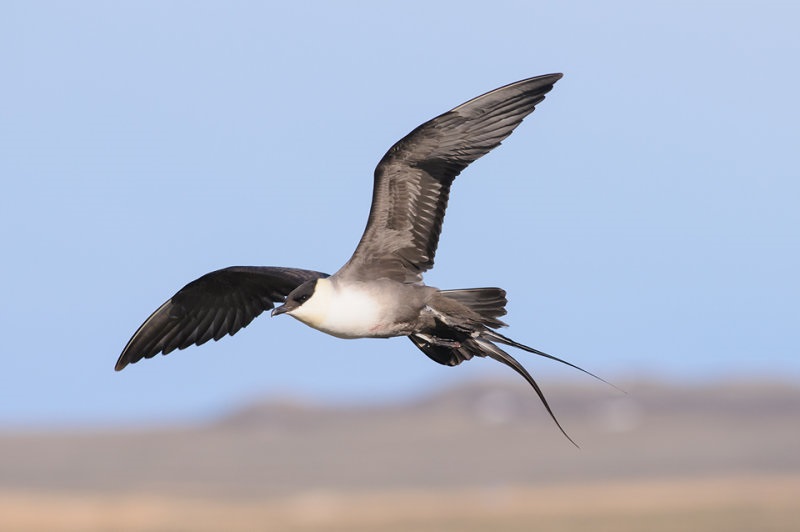Nunavut may not spring to mind immediately as a wildlife lover’s destination. However, this massive undeveloped province has a great deal to offer the bird watcher or mammal fan. Canada’s newest territory, Nunavut was created mainly from the old Northwest Territories and came into being on April 1, 1999. A vast area of land and water, it covers almost 2 million square kilometres, and is sparsely populated with only about 27,000 inhabitants. It spans an area from 52 degrees to 84 degrees latitude.
The southern islands in James Bay are dominated by extensive boreal forest similar to the adjacent mainland. The bulk of Nunavut though is well above the treeline in Canada. The further one travels northwards, the more the vegetation becomes sparse and stunted. The landscape is generally low and gently rolling, from the lowland tundra to the glaciers in the extreme north, punctuated in some locales by mountainous cliffs and sea walls.
Travel to Nunavut can be a logistical nightmare. Although there is a regular air service from the south into larger settlements, visits to more remote locations can be costly and difficult. Most settlements are fairly small and with limited resources. Due to the shortage of certain supplies, the cost of purchasing or shipping almost any goods in Nunavut is significantly higher than in southern Canada.
The extreme harsh conditions, and sparse vegetation throughout most of Nunavut, are a limiting factor on the abundance and diversity of bird species. The current territorial species list stands at about 230 birds. The further north one travels in Nunavut, the lower the number of species one encounters daily. However, the experience of seeing large goose colonies, Snowy Owls hunting lemmings, singing shorebirds, and jaegers strafing the tundra will enthral the ardent birder.

The best time to visit Nunavut is from mid June to mid July. When birding at that time, you will be regaled with the beautiful calls of various shorebirds, which usually only peep or are silent during migration. With 24 hours of sunlight during this period, wildlife watching can be enjoyed around the clock. Occasional warm temperatures in the 10c-20c degree range can prompt an onslaught of mosquitoes, which can be problematic at times. Most bird species arrive, breed and depart in a relatively short period of time.

Respect and admiration for wildlife is a deeply rooted part of Inuit culture. Nunavummiut feel lucky that they live next to them and they know that you will love to see them too. They welcome eco-tourists and will happily and safely guide you to pristine places where you can share in the thrilling experience of viewing some of the most exotic wild animals on the planet. Whether by dog sled or snowmobile excursion, by boat, ATV or small aircraft, on cross-country skis or by trekking on foot, experienced outfitters and guides in every part of Nunavut are proud to introduce you to the wonderful local wildlife.
Marine mammals are a big draw with several whale species are on offer including Beluga (white whales), Narwhal with their unicorn-like tusk and Bowhead. Of course there are Polar Bears, Walrus and Fur Seals. Land mammals include arctic Fox, Caribou and Muskox.
A popular wildlife watching areas is at Cambridge Bay (Victoria Island) (Map) with a population of c.2,200 people, it receives regular air service from Edmonton. Accommodation is available in the community, as are most services. Common species seen near the township include Thayer’s Gull, Sabine’s Gull, King Eider, Long-tailed and Parasitic Jaegers (Skuas), various shorebirds (waders) and Pacific Loon (Diver) along with roaming herds of Muskoxen, Arctic Fox, Arctic Hare and lemmings.

Another is at Ellesmere Island (Map) the northernmost island in the Arctic Archipelago. It can appear to be a desolate, isolated locale, but species such as Red-necked Phalarope, White-rumped Sandpiper, Red Knot, Purple Sandpiper, Common Ringed Plover, and Northern Wheatear are regular breeders there.

Major Source: Fatbirder
Map Source: Googlemaps™
Photo Source: © Frank Dröge
